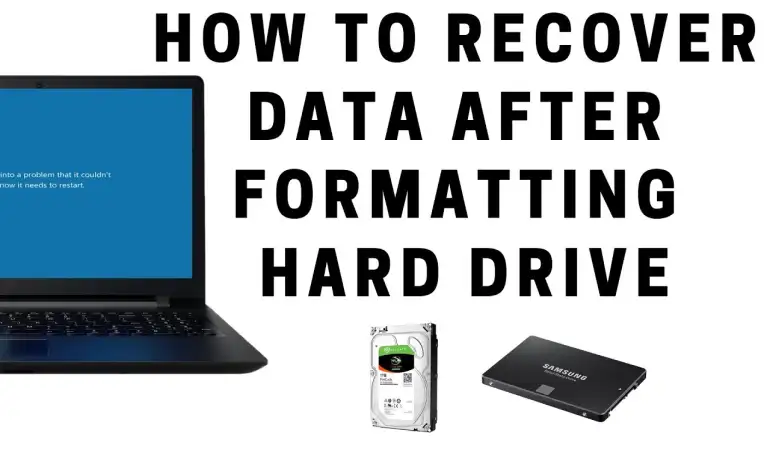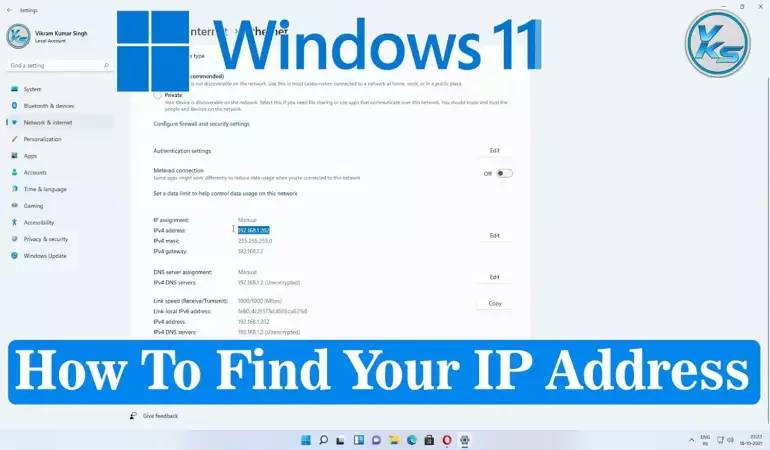How to Recover Data from a Formatted Drive
Even accidental hard drive formatting is reversible, and we’ve curated the best solutions to help you recover your formatted hard drive in no time. But first…
October 06, 2024 11:28
Ever experienced that heart-sinking moment when you accidentally format a drive and realize all your important files are gone? It’s one of the worst feelings, and if you’re reading this, you’re likely in panic mode. The good news is, all hope isn’t lost! Yes, you can recover data from a formatted drive, but you need to act quickly and carefully to maximize your chances.
This guide will walk you through everything you need to know about recovering data after formatting a drive, from understanding what formatting does, to step-by-step instructions on how to retrieve your precious files.
Understanding What Happens When a Drive is Formatted
Formatting a drive prepares it for storing data by setting up a new file system. Whether you’re formatting an external hard drive or your computer’s internal disk, the process clears the current file system and creates a fresh one.
Types of formatting:
There are two types of formatting: quick and full. A quick format just erases the file directory, making the drive appear empty, but your data is technically still there. A full format, on the other hand, overwrites the entire drive with zeros, making recovery much more difficult.
Does formatting erase all data?
Not immediately. In the case of a quick format, the data is not actually deleted—it’s just made “invisible” to the system. This is why data recovery is possible if you act quickly and avoid overwriting the drive with new files.
Is Data Recovery Possible After Formatting?
Yes, it is! When a drive is formatted, the data isn’t immediately wiped out—it’s just marked as available space for new data to overwrite it. With the right tools and techniques, it’s often possible to recover a significant portion of your data. However, time is of the essence—the longer you wait, the higher the chance that the data will be overwritten and unrecoverable.
Factors Affecting Data Recovery
- Time since formatting: The longer you wait to attempt recovery, the higher the risk of losing data.
- Type of drive: Recovering data from a hard disk drive (HDD) is usually more successful than from a solid-state drive (SSD). SSDs use a process called TRIM that can make recovery harder.
- Usage after formatting: If you’ve added new files after formatting, you might have already overwritten the data you’re trying to recover.
- Previous backups: If you have a backup, you’re already in good shape. If not, it’s more important to avoid further usage until recovery is attempted.
Common Mistakes to Avoid After Formatting
- Writing new data to the drive: Avoid saving anything to the drive until you’ve attempted recovery. Writing new data can permanently overwrite your old files.
- Using unreliable recovery tools: Not all recovery software is created equal. Some may corrupt your files further or have limited success rates.
- Ignoring professional help: If you’re dealing with important files, it’s wise to consider professional recovery services if DIY methods don’t work.
Methods to Recover Data from a Formatted Drive
There are two main approaches to recovering data from a formatted drive:
- Data recovery software – This is the most accessible option for most users. These programs scan your drive for recoverable files and allow you to restore them.
- Professional recovery services – For critical data or complex cases, data recovery professionals have the tools and expertise to retrieve lost files when software alone doesn’t suffice.
How to Recover Data Using Data Recovery Software
Here’s a step-by-step guide for using recovery software:
For Windows Users:
- Download and install reliable data recovery software (e.g., EaseUS Data Recovery Wizard, Recuva, or Disk Drill).
- Launch the software and select the formatted drive for scanning.
- Run a scan, which may take time depending on the drive size.
- Preview the recoverable files.
- Select the files you need and save them to a different drive (never recover files to the same drive).
For Mac Users:
- Download software compatible with macOS (e.g., Stellar Data Recovery or Disk Drill).
- Open the software and choose the formatted drive.
- Start the scan, and wait for the results.
- Preview and select the files to recover.
- Save the files to a separate drive.
Recovering Data from a Formatted HDD
HDDs are more forgiving when it comes to recovery, especially after a quick format. Here’s what to do:
- Stop using the drive immediately after formatting.
- Use a trusted data recovery tool to scan for lost files.
- Recover and back up your data as soon as possible to avoid any risk of overwriting.
Recovering Data from a Formatted SSD
Recovering data from an SSD can be tricky due to the way they manage data. Most SSDs support the TRIM command, which automatically erases data blocks that are no longer in use, making recovery nearly impossible after a full format. However, you can still try:
- Use recovery software that supports SSDs.
- Avoid using the drive until recovery is complete.
- Consider professional help if the DIY approach fails, especially for critical data.
Free vs. Paid Data Recovery Software
Free software: Free tools like Recuva can recover smaller amounts of data but may be limited in their capabilities, such as file previews or full scans.
Paid software: Paid options like EaseUS or Stellar offer advanced features, better recovery success rates, and often come with customer support.
Using Command Prompt for Data Recovery (Windows Only)
If you’re tech-savvy, you can try using the Command Prompt to recover files. Here’s a simplified guide:
- Open Command Prompt as an administrator.
- Type
chkdsk E: /f(replace "E" with your drive letter). - Run the command to fix errors and recover readable data.
When Should You Seek Professional Help?
If you’ve tried recovery software and still can’t access your files, or if the data is crucial (e.g., business documents or irreplaceable photos), it’s time to call in the pros. Data recovery professionals use specialized equipment to retrieve files even from heavily damaged or formatted drives.
Best Practices for Preventing Data Loss in the Future
- Regular backups: The best way to avoid this nightmare in the future is by backing up your files regularly.
- Cloud storage: Consider using cloud storage services for automatic backups.
- Reliable hardware: Invest in reliable storage devices and replace them periodically to avoid failures.
What to Do if Recovery Fails
If all recovery methods fail, assess whether the data is replaceable. If it’s critical, consult a professional data recovery service. They often have a higher success rate but can be costly.
FAQs about How to Recover Data from a Formatted Drive
1. Can I recover data from a drive formatted years ago?
It depends on whether new data has overwritten the old files. If the drive hasn’t been used much, recovery is possible.
2. How long does the data recovery process take?
It varies depending on the drive size and the recovery method, but most scans take a few hours.
3. Is free data recovery software reliable?
Free software can work for small recoveries, but for more complex cases, paid versions are often more effective.
4. What is the success rate of recovering data from an SSD?
SSDs are harder to recover data from, especially if the TRIM function is enabled. Success rates are generally lower compared to HDDs.
5. Can I recover data if I’ve overwritten files after formatting?
Once files are overwritten, they are often unrecoverable. It’s crucial to stop using the drive as soon as possible.
Conclusion
Recovering data from a formatted drive can be a nerve-wracking experience, but it's not always a lost cause. By acting quickly, avoiding overwriting, and using the right tools, you can increase your chances of successfully retrieving your files. And, of course, the best solution is prevention—make backups a habit to avoid this kind of panic in the future.











